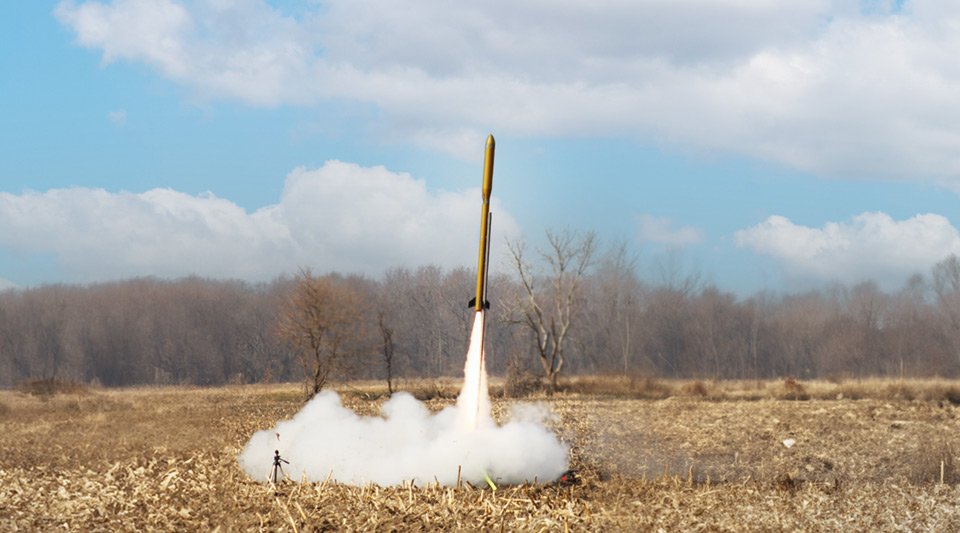The University of Notre Dame’s Rocketry Team (NDRT) was declared the overall winner of NASA’s 2024 University Student Launch Initiative.
“Notre Dame succeeded at every milestone, exhibiting discipline, and a commitment to quality that ultimately ended in a spectacular competition flight,” said retired NASA astronaut Doug Hurley, who announced the team’s win on the Marshall Space Flight Center YouTube channel on June 7.

Notre Dame was one of 49 universities competing in NASA’s Student Launch, a 9-month long challenge that tasks student teams from across the U.S. to design, build, test, and launch a high-powered rocket carrying a scientific or engineering payload. Teams must also demonstrate the highest standards in safety and engage their communities in educational, hands-on STEM activities.
This year, NASA challenged students to design and build a payload that simulated the functions of a crew capsule. It needed to jettison from the rocket on descent and land four simulated passengers, STEMnauts, safely without a parachute.
“To create our payload, we used an autorotating device, inspired by the spiral descent of maple tree seeds,” said Paul du Vair, team project manager and aerospace engineering major. “When the payload comes out of the rocket, it’s not powered by anything, but as the air flows through the payload, it spins the rotors, and that provides lift to slow down the entire system.”
The Notre Dame Rocketry Team tests their payload design, which was inspired by the spiral descent of maple tree seeds.
NDRT selected a motor, a cylinder of solid fuel, powerful enough to blow past their target altitude of 5,200 feet yet could be reined in by an apogee control system that delivered the right amount of drag at the appropriate altitude.
Joseph Gonzales, the team’s graduate student advisor and namesake for this year’s 111-in., 43-lbs. gold rocket affectionately named “Dr. Joe,” said that the implementation of a new and improved algorithm for the apogee control system, utilizing computational fluid dynamics (CFD), was a factor in their success.


Tenacity was frequently cited as having played an important part in this year’s win. When a supplier mistakenly sent a rocket body made from a material that blocked their payload’s radio signals, the students found a way to route their antennas through 3D-printed, low-profile casings on the rocket’s exterior.
When their test rocket landed in a pond, destroying some of their custom-built electronics, the team rebuilt and made operational the damaged circuit boards within a week to collect missing data. “I know this sounds cheesy, but to me, that’s what it means to be Fighting Irish,” said David Brunsting, the team’s mentor.
The team also won first place in the STEM engagement and safety categories, serving more than 1,500 students from area schools and delivering safety documentation, which NASA described as “exhaustive” and “leaving no concern or hazard unresolved.”
“Our team just refused to give up and everybody was willing to go the extra mile,” said vehicles lead and aerospace engineering major Luke Ricci. “We set a team record in number of flights this year—10 times, and we never accepted a flight as good enough.”
— Karla Cruise, Notre Dame Engineering
